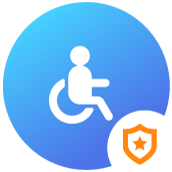Households
-
Household Type
48.1 % 6.5 % 17.8 % 27.6 % -
Relationship
38.4 % 18.4 % 2.5 % 29.7 % 11 %
Marital Status
| 🙎 Never Married | 💏 Married | 🏠 Married,Separated | 👦 Widowed | 💔 Divorced | |
| Male | 47.51 | 64.54 | 2.05 | 3.41 | 12.26 |
| Female | 41.52 | 63.35 | 2.86 | 11.82 | 16.51 |
| Male | Female | |
| 🙎 Never Married | 47.51 | 41.52 |
| 💏 Married | 64.54 | 63.35 |
| 🏠 Married,Separated | 2.05 | 2.86 |
| 👦 Widowed | 3.41 | 11.82 |
| 💔 Divorced | 12.26 | 16.51 |
* Numbers are in millions
Veteran & Disability
-

Veteran:
17,835,456 -

Disability:
40,786,461
Population Mobility
Most Searched ZIP Codes
Q&A
What are household types?
As in census data, there are four types of households. That is married-couple households; cohabiting couple households; male householder, no wife present; female householder, no husband present.
What is the household relationship?
Household relationship refers to the relationship with the householder, which includes the householder, spouse, unmarried partner, child, other relatives, and other nonrelatives.
What is the veteran status?
A veteran is a person 18 years old or over who has served in the military but is not now serving. Organizations they serve include, but are not limited to, the U.S. Army, Navy, Air Force, Marine Corps, the Coast Guard, etc.
Why is veteran & disability data important?
These data help some government agencies to formulate policies and programs to help veterans and their families return to normal life with education, insurance, health care, disability, etc.
What can we know from population mobility data?
The terms - residence one year ago, place of birth, U.S. citizenship, Language spoken at home - can reflect the population mobility of the community. It includes all changes of residence, for example, moving into or out of a place, residents from other cities, counties, states, or other countries in recent years. Immigrants from other countries and their citizenship.
 United States ZIP Code
United States ZIP Code


What is the difference between household and family?
A household includes all the people who occupy a housing unit as their residence, regardless of whether they have a biological relationship. And a family includes the householder and other people who have a relationship with the householder by birth, marriage, or adoption.